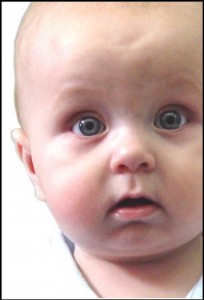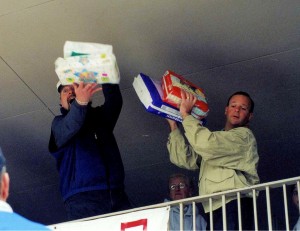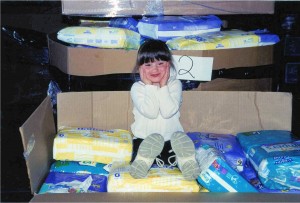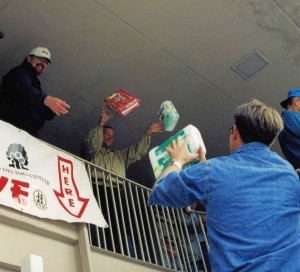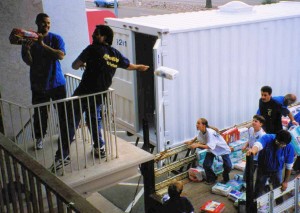 Yesterday, I began a series in honor of the 1 year anniversary of the release of the 2nd Edition of FriendRaising.
Yesterday, I began a series in honor of the 1 year anniversary of the release of the 2nd Edition of FriendRaising.
To read this series from the beginning, head here.
In that series, I’m highlighting stories from the book – stories of our days building the first-ever Diaper Bank in Tucson!)
Today’s story comes from our building not the first, but the second-ever Diaper Bank, in Phoenix. Yes, we did that, too – to prove that the collaborative model at the core of Tucson’s Diaper Bank could be replicated. You’ll see in this story that such collaboration was not only possible, but a life-saver.
From FriendRaising
(page 176)…
Many organizational leaders almost choke when we suggest that their strongest allies could be other organizations – the ones they have been so used to considering their “competition.” But the truth is that these other groups are passionate about the exact same things your organization’s board and staff and volunteers are passionate about. If there are any groups who should know each other better, building the trust relationships that become friendships, it is all those other organizations you have viewed as your competition!
 This is not pie in the sky. It is reality. We see others as “competition” when we see resources as scarce. In reality, though, support for your mission is as abundant as the passionate chords you strike in your community. When we realize the power that passion has to connect us to others who want the same thing, we begin to realize the scarcity mind-set may not be the only way to see the world.
This is not pie in the sky. It is reality. We see others as “competition” when we see resources as scarce. In reality, though, support for your mission is as abundant as the passionate chords you strike in your community. When we realize the power that passion has to connect us to others who want the same thing, we begin to realize the scarcity mind-set may not be the only way to see the world.
The protective walls we have built around our organizations have kept out the very people who want to help the causes we care about. By taking a community engagement approach, we bust down those protective walls, inviting those whose passions we share into our home, to begin sharing ideas and thinking about the larger things we can accomplish together. From there, the gifts we provide to our communities – creating significant, visionary change in the community’s quality of life – are truly without limit.
Building the Second-Ever Community-wide Diaper Bank
We spent a year doing the Community Sleuthing that led to creating the Diaper Bank in Phoenix. Over the course of that year, we spoke with foundation leaders and government representatives, nonprofit Executive Directors and Board Members, business people and volunteers. We shared with them the collaborative approach the Diaper Bank had been built upon in Tucson, and we talked about how much we hoped to prove that same collaborative approach could work anywhere.
And from virtually every person we spoke with, we heard almost the identical refrain: “I don’t want to rain on your parade, but this will never work here. Organizations in the Valley do not work together.” It was the rare person who did not wish us all sorts of luck on the one hand, while simultaneously adding that pessimistic, competition-tinged farewell.
Because one of the things that had made Tucson’s Diaper Bank so successful was precisely that it was built upon a model of shared resources, shared mission, and shared responsibility for improving the community’s quality of life, we knew the whole mission would change if we changed those very basic assumptions. We were therefore even more determined to see if perhaps what we were hearing was more assumption than fact.
So after a year of sleuthing, we held our breath and dove into the deep end, convening the Diaper Bank’s first “organizing” meeting. We announced the meeting to those with whom we had met throughout the year and sent press releases through the local newspapers and networking groups.
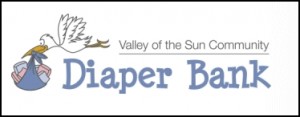 75 people showed up at that first organizational meeting, breaking into committees, and enthusiastically getting to work.
75 people showed up at that first organizational meeting, breaking into committees, and enthusiastically getting to work.
After a year of hearing that same message, over and over – “the organizations here will never work together” – we were skeptical about the group’s initial enthusiasm. Could this momentum continue? Will these groups continue to work together to build something that has never existed in Phoenix before?
History has proven that the answer was, of course, “yes.” And history also proved what we knew to be true – that given the opportunity to share what they had in abundance – knowledge and experience and skills – these organizations would stop seeing each other as competition, and instead work together to create a resource they would all eventually share.
Meetings were hosted at a different agency each time. At the end of each meeting, the host would spend a few moments talking about his/her organization and then give a tour for those who were interested. After just a few sessions, when it came time to decide where the next meeting would be held, hands would shoot into the air – everyone wanted to show off the work they were doing!
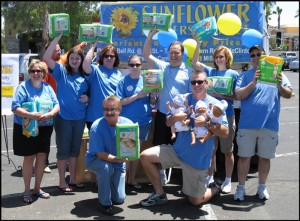 But the flip side of that was true as well. Those who attended those meetings were just as eager to take those tours and learn about the work being done by others. The participant from one tiny organization summed it up best, after touring one of the area’s highest profile (and highest budget) organizations. “We do similar work, but on a much smaller scale. We don’t even have a big enough meeting room to host one of these meetings! I have always wanted to see how they do things here, but I never would have had the nerve to ask if I could visit if it weren’t for this opportunity.”
But the flip side of that was true as well. Those who attended those meetings were just as eager to take those tours and learn about the work being done by others. The participant from one tiny organization summed it up best, after touring one of the area’s highest profile (and highest budget) organizations. “We do similar work, but on a much smaller scale. We don’t even have a big enough meeting room to host one of these meetings! I have always wanted to see how they do things here, but I never would have had the nerve to ask if I could visit if it weren’t for this opportunity.”
From the synergy of working together on Diaper Bank-related work, and further from the synergy of learning from each other and seeing each other’s facilities, all sorts of collaborative ideas, completely unrelated to the Diaper Bank, began to emerge.
Those funders and government leaders and others “in the know” who suggested the Valley’s agencies would not work together were clearly wrong. Leaders from over 50 organizations built the Diaper Bank in the Phoenix metro area, and continued to work together – helping when there were diapers to sort and distribute, doing Diaper Drives, sending volunteers.
When the goal was grander than any one organization could accomplish; when the benefit was so clear, for both the community overall, and for each of their clients independently, these organizations with such a strong reputation for NOT working together were an amazing team. They set aside their own needs for the greater good.
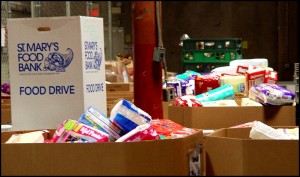 The most heartening result of this collaborative approach happened when hard economic times hit. The Diaper Bank’s collaborative culture included its location inside the warehouse at St. Mary’s Food Bank. When the economy started to crumble, St. Mary’s agreeed to take the Diaper Bank into its family even deeper, making the Diaper Bank an official program of the Food Bank. This never would have been possible if the Diaper Bank had not built that deep trust relationship from the very beginning. As a result, during the worst economic crash in recent memory, people who needed diapers in the Phoenix community could still get them.
The most heartening result of this collaborative approach happened when hard economic times hit. The Diaper Bank’s collaborative culture included its location inside the warehouse at St. Mary’s Food Bank. When the economy started to crumble, St. Mary’s agreeed to take the Diaper Bank into its family even deeper, making the Diaper Bank an official program of the Food Bank. This never would have been possible if the Diaper Bank had not built that deep trust relationship from the very beginning. As a result, during the worst economic crash in recent memory, people who needed diapers in the Phoenix community could still get them.
We are what we think. If we think we are competitors, we throw up those walls and the community is the one to lose out in the end. When we realize we are all in this together, building one community, with one shared mission – the mission of making life better – it is astounding what we can and do accomplish.
Tomorrow, this series continues with the story – complete with photos – of grown men and women hurling 300,000 diapers off the 2nd floor balcony for our annual Diaper Hurl! You’ll find that story here.
To read more from FriendRaising, click here to download portions as a PDF.

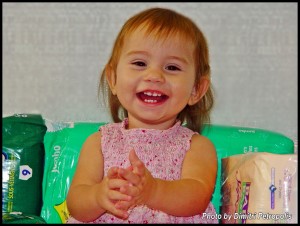 Back in 1992, when State funding for childcare was about to be cut by the Arizona legislature, the Diaper Bank realized the crippling effects that would have on a parent’s ability to work.
Back in 1992, when State funding for childcare was about to be cut by the Arizona legislature, the Diaper Bank realized the crippling effects that would have on a parent’s ability to work.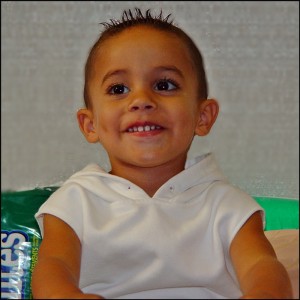 We handed a pad and pencil to those in attendance and asked them to do the math and help this family budget. “What would you do? How would you survive? What decisions would you have to make?” They learned in a flash what is meant by the words “Working Poor”.
We handed a pad and pencil to those in attendance and asked them to do the math and help this family budget. “What would you do? How would you survive? What decisions would you have to make?” They learned in a flash what is meant by the words “Working Poor”.